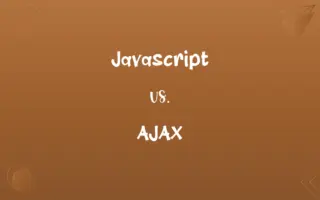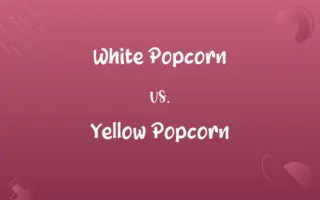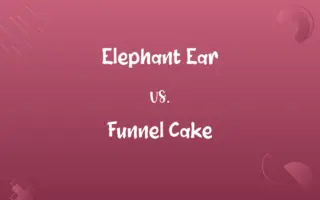TCP/IP Model vs. OSI Model: Know the Difference

By Shumaila Saeed || Published on February 8, 2024
TCP/IP is a 4-layer model used for data communication over the internet, while OSI is a 7-layer theoretical framework for understanding network architecture.

Key Differences
The TCP/IP Model, primarily used for internet communications, has four layers: Network Interface, Internet, Transport, and Application. In contrast, the OSI Model is a conceptual framework with seven layers: Physical, Data Link, Network, Transport, Session, Presentation, and Application. Each layer in the OSI Model has distinct functions, whereas the TCP/IP Model combines certain OSI layers.
Shumaila Saeed
Feb 08, 2024
The TCP/IP Model, developed prior to the OSI Model, is practical and simplistic, focused on standardizing data transmission over the internet. The OSI Model, however, was created by the International Organization for Standardization (ISO) as a comprehensive model to standardize and conceptualize the functions of a telecommunication or computing system without regard to its underlying internal structure and technology.
Shumaila Saeed
Feb 08, 2024
In the TCP/IP Model, the Application layer handles high-level protocols, the Transport layer ensures data transmission reliability, the Internet layer manages packet routing, and the Network Interface layer deals with physical network hardware. The OSI Model, however, separates these functions more distinctly, with layers dedicated to session management, data presentation, and even physical signal transmission.
Shumaila Saeed
Feb 08, 2024
The OSI Model is widely used for educational purposes to explain network interactions and design network protocols, while the TCP/IP Model is used as a practical framework in real-world networking. The TCP/IP Model's streamlined approach is often seen as more efficient, as it combines several OSI layers into fewer layers.
Shumaila Saeed
Feb 08, 2024
The TCP/IP Model has had a significant impact on the development and implementation of internet protocols. In contrast, the OSI Model, while not directly implemented in the same way, has influenced the understanding and teaching of network protocol design and operation.
Shumaila Saeed
Feb 08, 2024
ADVERTISEMENT
Comparison Chart
Number of Layers
4 layers: Network Interface, Internet, Transport, Application
7 layers: Physical, Data Link, Network, Transport, Session, Presentation, Application
Shumaila Saeed
Feb 08, 2024
Practical Use
Widely used in real-world internet networking
Mostly theoretical, used for education and conceptual understanding
Shumaila Saeed
Feb 08, 2024
Layer Functions
Combined functions in fewer layers
Distinct, separate functions for each layer
Shumaila Saeed
Feb 08, 2024
Origin and Development
Developed for practical, efficient internet communication
Developed as a comprehensive model for network systems
Shumaila Saeed
Feb 08, 2024
Implementation
Directly implemented in internet protocols
Not directly implemented, but influences network design
Shumaila Saeed
Feb 08, 2024
ADVERTISEMENT
TCP/IP Model and OSI Model Definitions
TCP/IP Model
TCP/IP Model is a simplified, practical approach to computer network protocols.
TCP, a core protocol in the TCP/IP Model, ensures reliable data transmission.
Shumaila Saeed
Jan 24, 2024
OSI Model
OSI Model divides network communication into seven distinct layers.
The Physical layer of the OSI Model deals with physical connection between devices.
Shumaila Saeed
Jan 24, 2024
TCP/IP Model
TCP/IP Model is a four-layer protocol suite for communication over the internet.
The HTTP protocol operates at the Application layer of the TCP/IP Model.
Shumaila Saeed
Jan 24, 2024
OSI Model
OSI Model is a seven-layer framework for standardizing network communication protocols.
The OSI Model's Data Link layer handles frame transmission over a network.
Shumaila Saeed
Jan 24, 2024
TCP/IP Model
TCP/IP Model is the foundational network model used in modern internet architecture.
Internet routers use the Internet layer of the TCP/IP Model to route data.
Shumaila Saeed
Jan 24, 2024
ADVERTISEMENT
OSI Model
OSI Model provides a comprehensive approach to understand network interactions.
The Session layer in the OSI Model manages dialogues between computers.
Shumaila Saeed
Jan 24, 2024
TCP/IP Model
TCP/IP Model is a streamlined framework for internet data exchange.
IP addresses are used in the Internet layer of the TCP/IP Model for packet routing.
Shumaila Saeed
Jan 24, 2024
OSI Model
OSI Model is a theoretical model to conceptualize and teach network system functions.
The Presentation layer in the OSI Model is responsible for data translation and encryption.
Shumaila Saeed
Jan 24, 2024
TCP/IP Model
TCP/IP Model combines application, transport, internet, and network interface functionalities.
Email delivery relies on the Application and Transport layers of the TCP/IP Model.
Shumaila Saeed
Jan 24, 2024
OSI Model
OSI Model is an abstract representation of network protocol layers.
In the OSI Model, the Network layer is responsible for packet routing and forwarding.
Shumaila Saeed
Jan 24, 2024
Repeatedly Asked Queries
Is the TCP/IP Model theoretical or practical?
It's a practical model used in real-world networking.
Shumaila Saeed
Feb 08, 2024
What is the primary use of the TCP/IP Model?
For practical, efficient internet communication.
Shumaila Saeed
Feb 08, 2024
Are internet protocols based on the TCP/IP Model?
Yes, many internet protocols are based on it.
Shumaila Saeed
Feb 08, 2024
What is the primary purpose of the OSI Model?
For education and conceptual understanding of networks.
Shumaila Saeed
Feb 08, 2024
What is the TCP/IP Model?
It's a four-layer protocol suite for internet communication.
Shumaila Saeed
Feb 08, 2024
Is TCP/IP limited to the internet?
Primarily, though its principles can be applied generally.
Shumaila Saeed
Feb 08, 2024
What is the OSI Model?
A seven-layer theoretical framework for network communication.
Shumaila Saeed
Feb 08, 2024
Can the OSI Model apply to non-IP networks?
Conceptually, it can apply to various network types.
Shumaila Saeed
Feb 08, 2024
Do networking professionals use the OSI Model?
Yes, for conceptual understanding and education.
Shumaila Saeed
Feb 08, 2024
Is the OSI Model used in real-world networking?
It's mostly used theoretically, not directly in networking.
Shumaila Saeed
Feb 08, 2024
Are the layers in the TCP/IP Model strictly separated?
Not strictly, there's some functional overlap.
Shumaila Saeed
Feb 08, 2024
Can the OSI Model be used to troubleshoot network issues?
Yes, conceptually for understanding network layers.
Shumaila Saeed
Feb 08, 2024
Does the OSI Model detail physical network connections?
Yes, in its Physical layer.
Shumaila Saeed
Feb 08, 2024
Is the TCP/IP Model easier to understand than OSI?
Generally, due to fewer and more integrated layers.
Shumaila Saeed
Feb 08, 2024
Does the OSI Model directly influence network protocols?
It influences the design, but is not directly implemented.
Shumaila Saeed
Feb 08, 2024
Share this page
Link for your blog / website
HTML
Link to share via messenger
About Author
Written by
Shumaila SaeedShumaila Saeed, an expert content creator with 6 years of experience, specializes in distilling complex topics into easily digestible comparisons, shining a light on the nuances that both inform and educate readers with clarity and accuracy.




































































